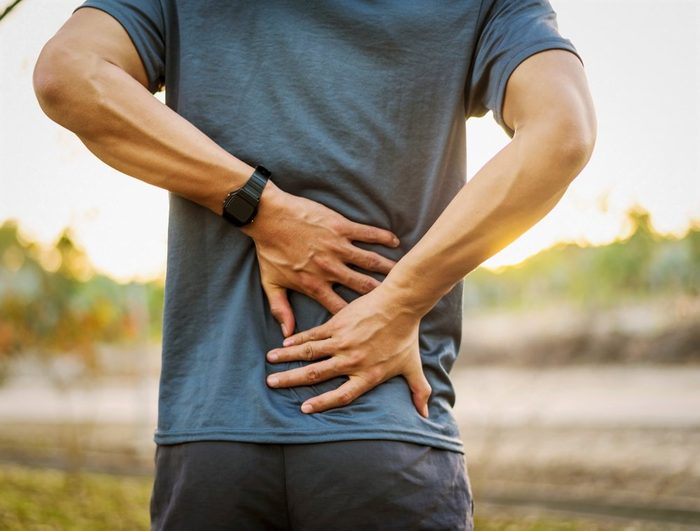
Your aching back
Back pain is one of the most common medical problems — four out of five Canadians will battle it at some point in their lives—and chronic lower back pain is the most common cause of job-related disability, according to Statistics Canada. Back pain is considered chronic when it lasts for 12 weeks or longer, according to the National Institute of Neurological Disorders and Stroke (NINDS). The following are 14 of the most common causes.

Age
Most cases of chronic lower back pain begin between the ages of 30 and 50 and worsen with age, according to Statistics Canada. “We tend to gain weight, be more sedentary, and do less exercise as we get older,” says Kiran Rajneesh, MD, a neurologist and pain physician at The Ohio State University’s Wexner Medical Center. “That predisposes muscles to lose tone and joints to scrape against each other and discs to squeeze on each other.” The body is also less able to repair wear and tear. “Even if you’re healthy, the physics are skewed against you as you get older.” That’s why it’s important to take stock now of these signs your body is aging faster than you are.

Strain or sprain
The most common cause of lower back pain is a strain or sprain, according to the American Association of Neurological Surgeons. “A strain affects the muscle, while a sprain affects a ligament,” says Alan Cornfield, a chiropractor in the Washington, DC, area. Both can be caused by an injury (from playing sports, for example, or lifting something heavy) or from gradual overuse. The pain radiates into the buttocks but doesn’t affect the legs; you may also get muscle spasms. Treatment usually consists of a short period of bed rest, anti-inflammatory medication, and sometimes physical therapy. Dr. Rajneesh stresses the importance of exercise: “Lack of physical activity leads to more deconditioning, which can result in disc herniation or arthritis,” he says. “See your physician to treat the acute phase, so you don’t get into chronic pain.” If you’re dealing with occasional back pain, these 5 exercises can make back pain better.
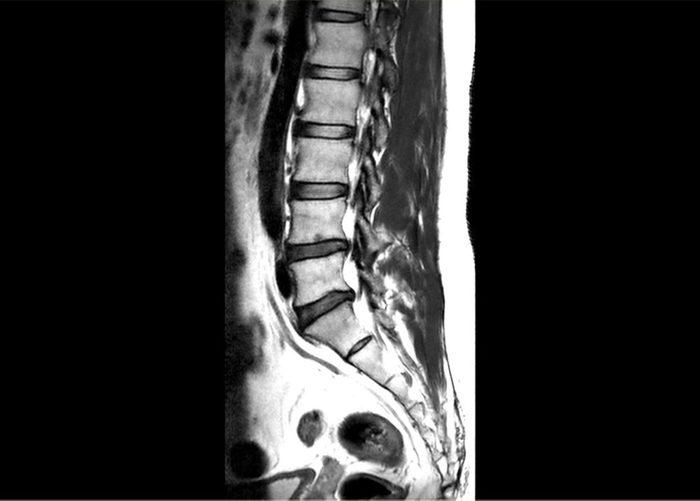
Herniated disc
A spinal disc is like a jelly doughnut, says Dr. Rajneesh: a soft center encased in a tougher exterior. A herniated disc (also called a ruptured or slipped disc) means some of the jelly has pushed out through a perforation in the exterior, causing pain, numbness, or weakness. It can be a result from gradual wear and tear or from an injury, such as a fall. “The pain is not there all the time,” he says. “It’s intermittent, and when you do certain things it sends jabs of pain down your legs.” Dr. Cornfield adds that pain may result when you bend to one side—”and the other side may give relief.” Always see a doctor if you experience pain that travels down your leg.
The first step in getting relief is to figure out exactly what type of back pain you’re experiencing.
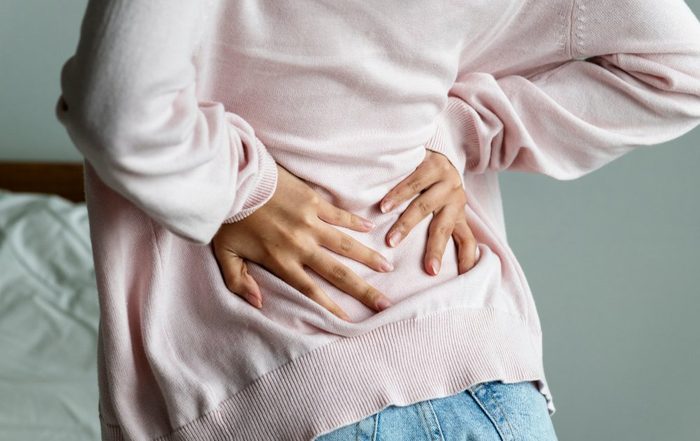
Arthritis
Osteoarthritis, the most common form of arthritis of the back, is a chronic condition characterized by the breakdown of the cartilage that cushions bones where they meet joints. “The pain stays in the back along the belt line,” says Dr. Rajneesh. “It’s a dull, nagging pain that is constant.” A physical exam along with imaging tests (X-ray, CT scan, MRI, or ultrasound) can locate the source of the trouble. Your doctor may recommend over-the-counter or prescription pain relievers, as well as physical therapy. Check out these natural ways to relieve arthritis pain.
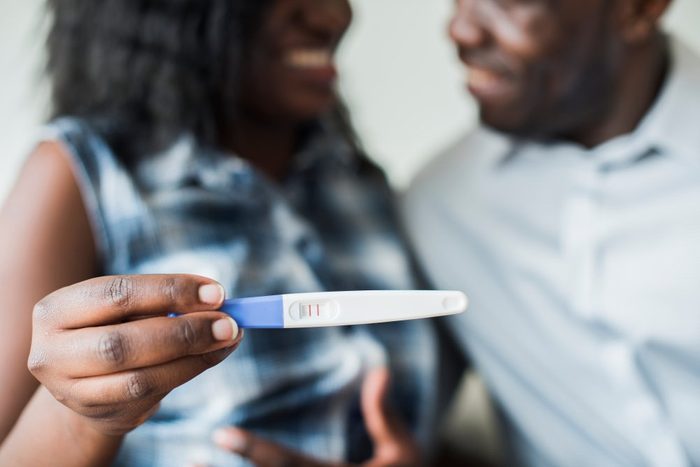
Pregnancy
Lower back pain during pregnancy is common—and with good reason. The additional weight gain in the front shifts the center of gravity and pulls on the back. At the same time, hormones relax the ligaments in the joints of the pelvis in preparation for childbirth. Prevent issues, according to the Mayo Clinic, by practicing good posture, sleeping on your side with a pillow between your legs, wearing low-heeled shoes, exercising, getting a massage, using a heating pad or ice pack, and considering chiropractic treatment or acupuncture. Back pain during pregnancy is a real issue affecting many women, but luckily, exercise can help – both you and your baby.
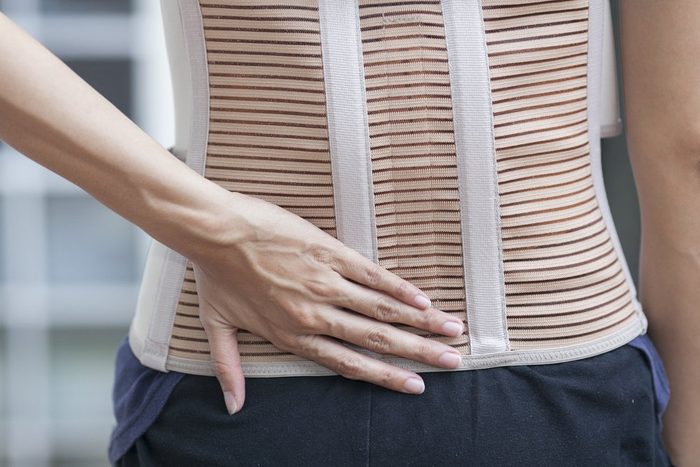
Traumatic injury
A sudden injury, such as from playing sports, a car accident, or a fall, can damage tendons, ligaments, or muscles in the back, according to the NINDS. A traumatic injury may also cause the spine to become overly compressed, which in turn can cause a ruptured disc. Treatment depends on the type and extent of the injury but may include physical therapy, medication, or, in rare cases, surgery. You may also want to explore acupuncture for pain relief.
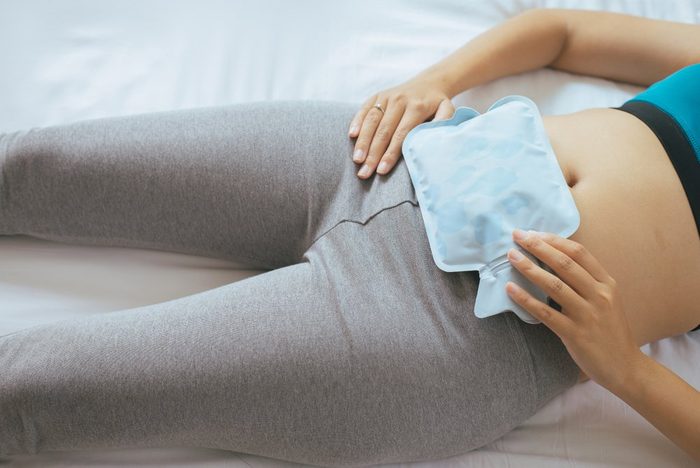
Endometriosis
A disorder in which tissue resembling that which normally lines the inside of the uterus grows outside the uterus, endometriosis can cause ongoing pain in the pelvis as well as the lower back, according to the Mayo Clinic. The pain is often worse during the menstrual cycle. A combination of a pelvic exam, ultrasound, or MRI may be used to diagnose it, and treatment may include taking hormonal contraceptives, pain medication, and sometimes surgery. Here’s what doctors want women to know about endometriosis.
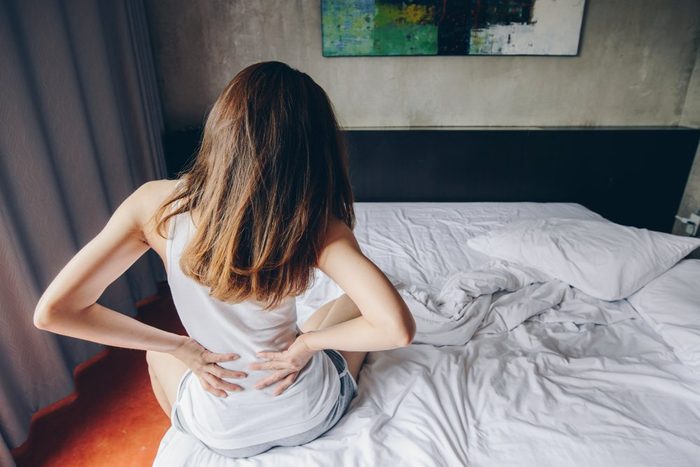
Fibromyalgia
This is a common, treatable, and usually missed cause of back pain, says Jacob Teitelbaum, MD, an internist and expert in chronic fatigue syndrome, fibromyalgia, sleep, and pain. “Fibromyalgia represents a body-wide energy crisis and can be caused by hormonal deficiencies, infections, poor nutrition, and dozens of other triggers.” Inadequate energy can cause muscles to get locked in a shortened position—which can cause back pain. Locked muscles may be to blame “if you can find areas on the back that you can push on that are not directly over the spine and that affect the pain,” he advises. “If pushing with your thumb alters the pain, it’s muscular until proven otherwise.” Over time, chronic muscle pain will trigger nerve pain as well, so he recommends seeing a physician. Learn more about fibromyalgia.
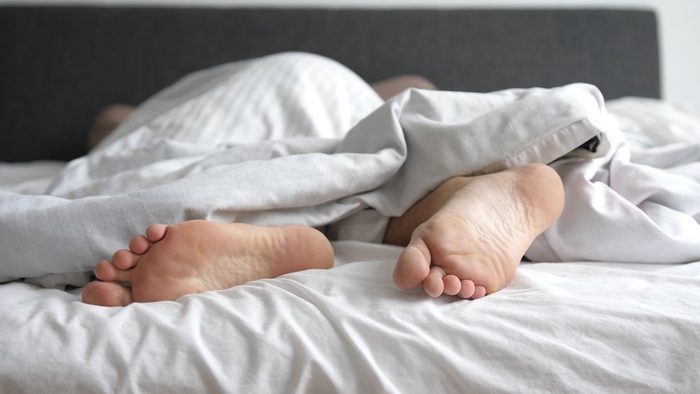
Foot problems
Feet are the foundation of the body, says Ernest Isaacson, MD, a podiatrist with offices in Manhattan and Bronx, NY. “Just as a building can’t stand straight without a proper foundation, neither can we,” he says. “Any foot problem can lead to back pain as it tends to disrupt the normal gait pattern, increasing pressure on the other structures, such as the knees, hips, and back.” If your foot lacks good support (due to, for example, weakness of the arch) or if one leg is longer than the other (more common than you might think), an orthotic insert can help realign your foot and relieve strain on the back.
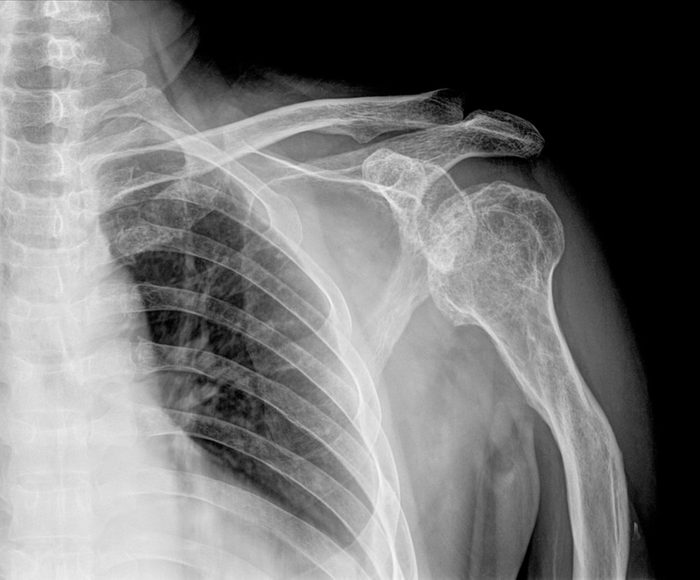
Bone spurs
These bony growths can form on the bones in your spine as you age. “Bone spurs themselves are typically not painful, but they can press on the spinal cord and nerves,” says Peter Lee, MD, a neurosurgeon at Northwestern Medicine Central DuPage Hospital. The resulting pain can radiate from the buttocks down the leg—this is called sciatica; in more severe cases, sciatica can cause weakness or numbness in the leg. “Patients often tell me their pain is worse with prolonged standing and walking, and it’s relieved by leaning forward. This is especially noticeable when they are shopping at the supermarket and have to lean over the cart. We call this the ‘shopping cart sign.'” When assessing you for bone spurs, a physician will perform a detailed exam and, if appropriate, order an X-ray, MRI, or both. Anti-inflammatory medications and physical therapy can help. In some cases, steroid injections or surgery may be indicated.
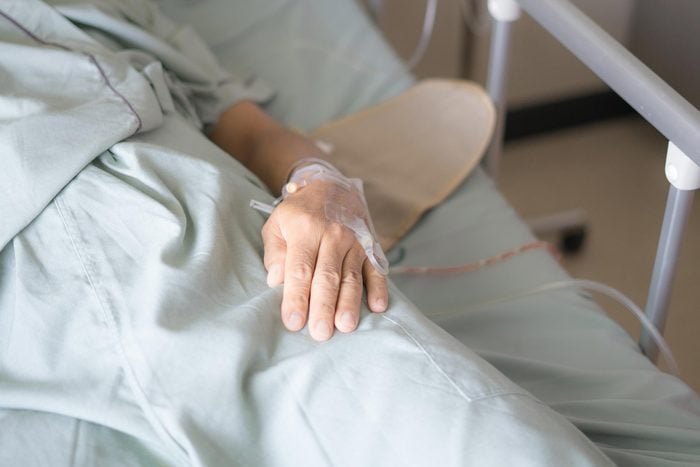
Cancer
It’s not surprising that cancer of the spine may cause back pain—but cancer-related back pain is more commonly triggered by breast or lung cancer, Dr. Rajneesh says. “The cancer may go to the bone, which can result in fractures, arthritis, or nerve irritation, depending on where the tumors are.” Back pain can also result from ovarian cancer, according to the Canadian Cancer Society. An oncologist can diagnose cancers and recommend treatment plans. These are the 10 most common types of cancer in Canada.
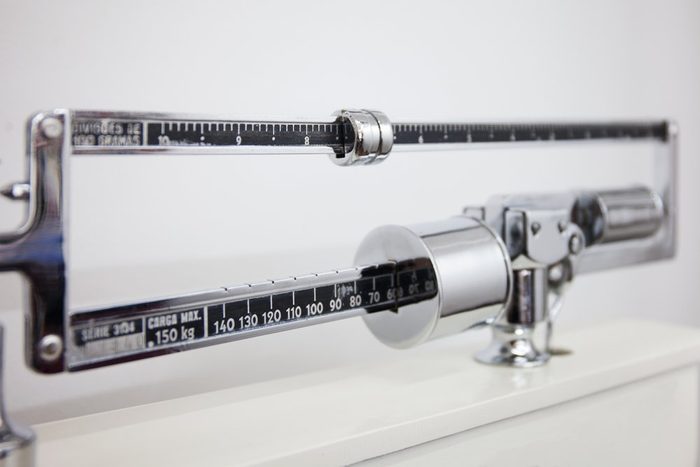
Being overweight
Body mass index (BMI) is an estimate of body fat based on weight-to-height ratio—you can easily calculate yours here. If your BMI is above 25 (overweight) and especially if it’s above 30 (obese), you’re at elevated risk for chronic lower back pain. “The weight is pulling on your spine 24-7,” says Dr. Cornfield. Especially problematic: belly fat. “The stomach pulls you forward and kills your lower back,” he says. Eating a healthy diet, exercising, reducing stress, and getting sufficient sleep can help with weight loss. Don’t miss these health secrets women over 50 should know.

Smoking
Smokers are three times more likely to develop chronic lower back pain than nonsmokers, according to research from Northwestern University. Smoking restricts blood flow to the discs that cushion the vertebrae, which increases the rate of degeneration and can cause pain. “Coughing from heavy smoking can also cause back pain,” says Dr. Cornfield. Smoking also increases the risk of spinal stenosis, a narrowing of the spaces within the spine that puts pressure on the nerves and can cause the “shopping cart sign.” The best thing you can do is quit.
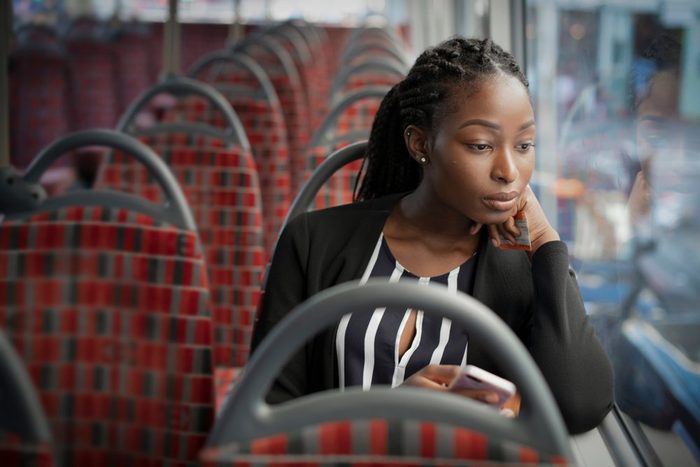
Anxiety and depression
While anxiety and depression don’t cause chronic lower back pain, they can compound it. “The overlap between chronic pain and depression is very big,” says Dr. Rajneesh. “Treating one can treat the other.” If people who are depressed or anxious don’t get treatment for that, they will not get full relief from whatever they’re doing for their back pain. “And that becomes a vicious cycle,” he says. Read up on the foods proven to fight depression.
